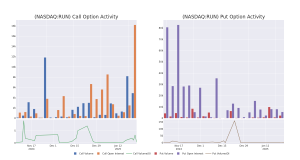- OP-3136, a potent KAT6 inhibitor, demonstrated robust anti-tumor activity as a single agent, as well as synergy and enhanced anti-tumor activity in combination with palazestrant; IND submission expected before year end
- Palazestrant demonstrated combinability and enhanced tumor suppression with both everolimus and capivasertib
SAN FRANCISCO, Oct. 23, 2024 (GLOBE NEWSWIRE) — Olema Pharmaceuticals, Inc. ((“Olema” or “Olema Oncology”, NASDAQ:OLMA), a clinical-stage biopharmaceutical company focused on the discovery, development, and commercialization of targeted therapies for breast cancer and beyond, today announced results from three preclinical studies that will be presented during poster sessions at the 36th EORTC-NCI-AACR Symposium on Molecular Targets and Cancer Therapeutics (ENA 2024) in Barcelona, Spain.
“Building on our earlier studies that showed compelling single agent activity for OP-3136, this new data demonstrates the potential for OP-3136 in combination with palazestrant, with strong tumor growth inhibition and regression relative to combinations with fulvestrant,” said David C. Myles, Ph.D., Chief Discovery and Non-Clinical Development Officer of Olema Oncology. “Taken together, these data reinforce our belief in the potential of OP-3136 as an exciting new therapy for breast and other cancers. We look forward to submitting our Investigational New Drug (IND) application for OP-3136 to the US Food and Drug Administration before the end of this year.”
Title: “Combining OP-3136, a KAT6 inhibitor, with endocrine therapy and CDK4/6 inhibitor enhances anti-tumor activity in ER+/HER2- breast cancer models”
Abstract: 230
Session: 300
Date: Thursday, October 24, 2024
Time: 9:00 to 17:30 CEST
Key findings include:
- OP-3136 inhibited cell proliferation and synergized with anti-estrogens (fulvestrant and palazestrant) and a CDK4/6 inhibitor (ribociclib) in a breast cancer cell line.
- OP-3136 led to either tumor growth inhibition or tumor regression in vivo in xenograft models across all treatment groups.
- In combination with OP-3136, palazestrant was consistently superior to fulvestrant and led to improved anti-tumor activity and tumor regression.
- OP-3136 showed robust synergistic anti‑tumor activity when combined with fulvestrant or palazestrant as doublet therapy in breast cancer models.
Dr. Myles continued, “With the potential to become a best-in-class endocrine therapy and improve upon current standard of care treatments for women living with metastatic breast cancer, our lead product candidate, palazestrant, continues to move through the clinic as a monotherapy in our pivotal Phase 3 OPERA-01 trial while also demonstrating combinability with multiple targeted agents, including CDK 4/6 inhibitors, in Phase 1/2 studies. Our preclinical posters at ENA show that the combination of palazestrant with both everolimus and capivasertib are synergistic and result in significant tumor regression. We look forward to advancing the development of palazestrant in combination with everolimus, ribociclib, and other agents and expect to present updated Phase 2 data for palazestrant in combination with ribociclib at the San Antonio Breast Cancer Symposium (SABCS) this December.”
Title: “Combining palazestrant, a CERAN, and everolimus, an mTOR inhibitor, enhances tumor suppression in ER+/HER2- breast cancer models”
Abstract: 211
Session: 300
Date: Thursday, October 24, 2024
Time: 9:00 to 17:30 CEST
Key findings include:
- Palazestrant and everolimus demonstrate synergy in vitro and in vivo and resulted in greater anti-proliferative activity than either agent alone.
- Combining palazestrant with everolimus causes gene signature transcriptional changes, downregulating cell cycle progression and upregulating apoptosis.
- These data support clinical investigation of the combination of palazestrant and everolimus.
Title: “Combining palazestrant, a CERAN, and capivasertib, a pan-AKT inhibitor, enhances tumor suppression in ER+/HER2- breast cancer models”
Abstract: 212
Session: 300
Date: Thursday, October 24, 2024
Time: 9:00 to 17:30 CEST
Key findings include:
- Palazestrant and capivasertib work synergistically to inhibit proliferation of multiple ER+ breast cancer models, both in vitro and in vivo.
- Palazestrant demonstrates superior anti-tumor efficacy over fulvestrant in combination with capivasertib, significantly inhibiting and repressing tumor growth.
- Combining palazestrant and capivasertib increases downregulation of genes associated with cell cycle progression.
- These data support clinical investigation of the combination of palazestrant and capivasertib.
Copies of these posters are available on the Publications page of Olema’s website.
About Palazestrant (OP-1250)
Palazestrant (OP-1250) is a novel, orally-available small molecule with dual activity as both a complete estrogen receptor (ER) antagonist (CERAN) and selective ER degrader (SERD). It is currently being investigated in patients with recurrent, locally advanced or metastatic ER-positive (ER+), human epidermal growth factor receptor 2-negative (HER2-) breast cancer. In clinical studies, palazestrant completely blocks ER-driven transcriptional activity in both wild-type and mutant forms of metastatic ER+ breast cancer and has demonstrated anti-tumor efficacy along with attractive pharmacokinetics and exposure, favorable tolerability, CNS penetration, and combinability with CDK4/6 inhibitors. Palazestrant has been granted U.S. Food and Drug Administration (FDA) Fast Track designation for the treatment of ER+/HER2- metastatic breast cancer that has progressed following one or more lines of endocrine therapy with at least one line given in combination with a CDK4/6 inhibitor. It is being evaluated both as a single agent in an ongoing Phase 3 clinical trial, OPERA-01, and in Phase 1/2 combination studies with CDK4/6 inhibitors (palbociclib and ribociclib), a PI3Ka inhibitor (alpelisib), and an mTOR inhibitor (everolimus). For more information on OPERA-01, please visit www.opera01study.com.
About OP-3136
OP-3136 is a novel, orally-available small molecule that potently and selectively inhibits KAT6, an epigenetic target that is dysregulated in breast and other cancers. In preclinical studies, OP-3136 has demonstrated significant anti-proliferative activity in ER+ breast cancer models and is combinable and synergistic with endocrine therapies including palazestrant and CDK4/6 inhibitors. Olema has successfully completed IND-enabling studies in support of a potential Investigational New Drug (IND) application with the FDA and expects to initiate Phase 1 clinical trials for OP-3136 in early 2025.
About Olema Oncology
Olema Oncology is a clinical-stage biopharmaceutical company committed to transforming the standard of care and improving outcomes for women living with cancer. Olema is advancing a pipeline of novel therapies by leveraging our deep understanding of endocrine-driven cancers, nuclear receptors, and mechanisms of acquired resistance. Our lead product candidate, palazestrant (OP-1250), is a proprietary, orally-available complete estrogen receptor (ER) antagonist (CERAN) and a selective ER degrader (SERD), currently in a Phase 3 clinical trial called OPERA-01. In addition, Olema is developing a potent KAT6 inhibitor (OP-3136). Olema is headquartered in San Francisco and has operations in Cambridge, Massachusetts. For more information, please visit us at www.olema.com.
Forward Looking Statements
Statements contained in this press release regarding matters that are not historical facts are “forward-looking statements” within the meaning of Section 27A of the Securities Act of 1933 and Section 21E of the Securities Exchange Act of 1934. Words such as “anticipate,” “believe,” “could,” “expect,” “goal,” “may,” “potential,” “upcoming,” “will” and similar expressions (as well as other words or expressions referencing future events, conditions or circumstances) are intended to identify forward-looking statements. These statements include those related to the timelines for initiation and enrollment for potential clinical studies and for results of clinical trials of palazestrant (OP-1250) as a monotherapy and in combination trials, potential beneficial characteristics, including but not limited to safety, tolerability, activity, efficacy and therapeutic effects of palazestrant, the potential of palazestrant to advance the standard of care for women living with cancer, palazestrant’s combinability with other drugs, the initiation of a phase 1b/2 clinical study of palazestrant in combination with everolimus and timing thereof, and the sufficiency and timing of Olema’s preclinical program, including the potential beneficial characteristics of its KAT6 inhibitor compounds and the timing of a potential IND application and advancement into clinical development for OP-3136. Because such statements deal with future events and are based on Olema’s current expectations, they are subject to various risks and uncertainties, and actual results, performance or achievements of Olema could differ materially from those described in or implied by the statements in this press release. These forward-looking statements are subject to risks and uncertainties, including, without limitation, those discussed in the section titled “Risk Factors” in Olema’s Quarterly Report on Form 10-Q for the quarter ended June 30, 2024, and future filings and reports that Olema makes from time to time with the U.S. Securities and Exchange Commission. Except as required by law, Olema assumes no obligation to update these forward-looking statements, including in the event that actual results differ materially from those anticipated in the forward-looking statements.
Contact
Courtney O’Konek, Vice President, Corporate Communications
media@olema.com

© 2024 Benzinga.com. Benzinga does not provide investment advice. All rights reserved.

